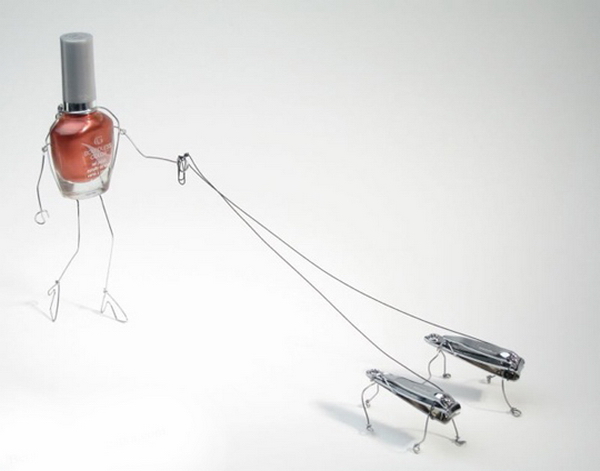Terry Border, a photographer and artist from Indianapolis, creates works of art from everyday objects, some wire and a lot of imagination. Bent Objects has become an international phenomenon, featuring on TV shows, newspapers, blogs and major international news sites around the world.
In an interview with OWNI, the artist shared his creative process:
(a) Look at an object.
(b) What does the object remind me of? What kind of character does it have?
(c) Add a bit of wire to bring it to life.
(d) Photograph it in a way that communicates my idea to the viewer.
To read more about the artist and his work, visit his blog.
In an interview with OWNI, the artist shared his creative process:
(a) Look at an object.
(b) What does the object remind me of? What kind of character does it have?
(c) Add a bit of wire to bring it to life.
(d) Photograph it in a way that communicates my idea to the viewer.
To read more about the artist and his work, visit his blog.


























































